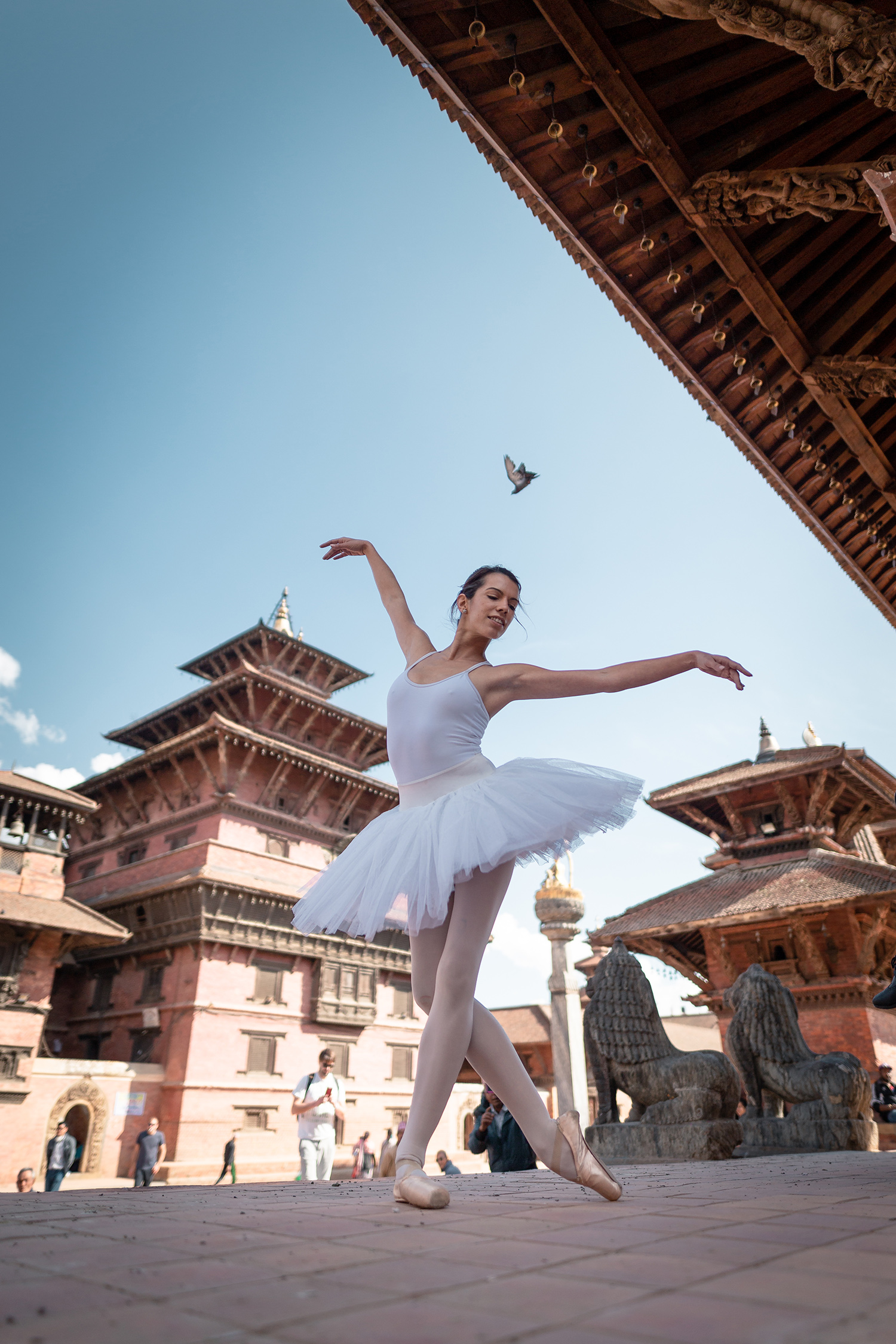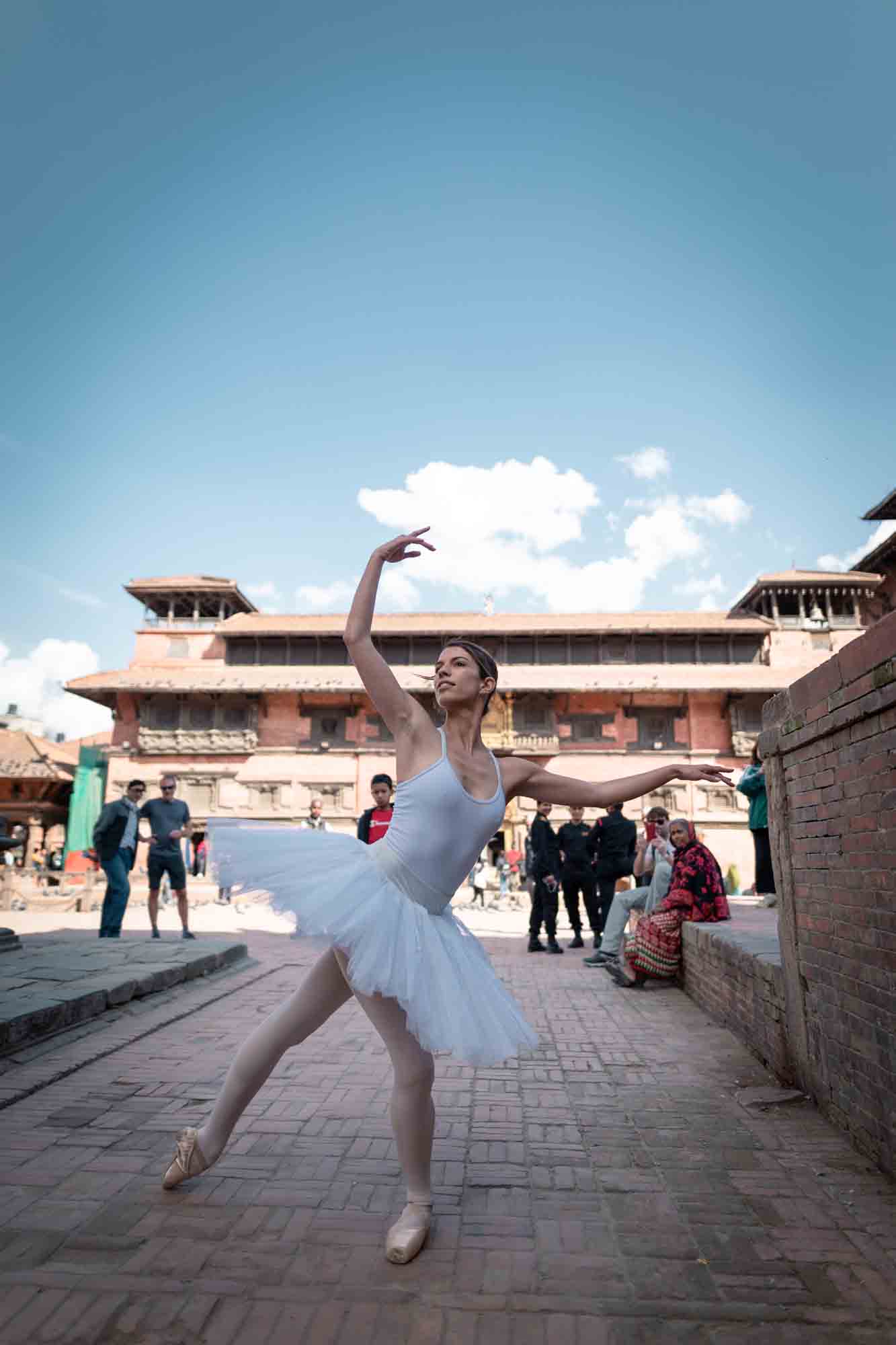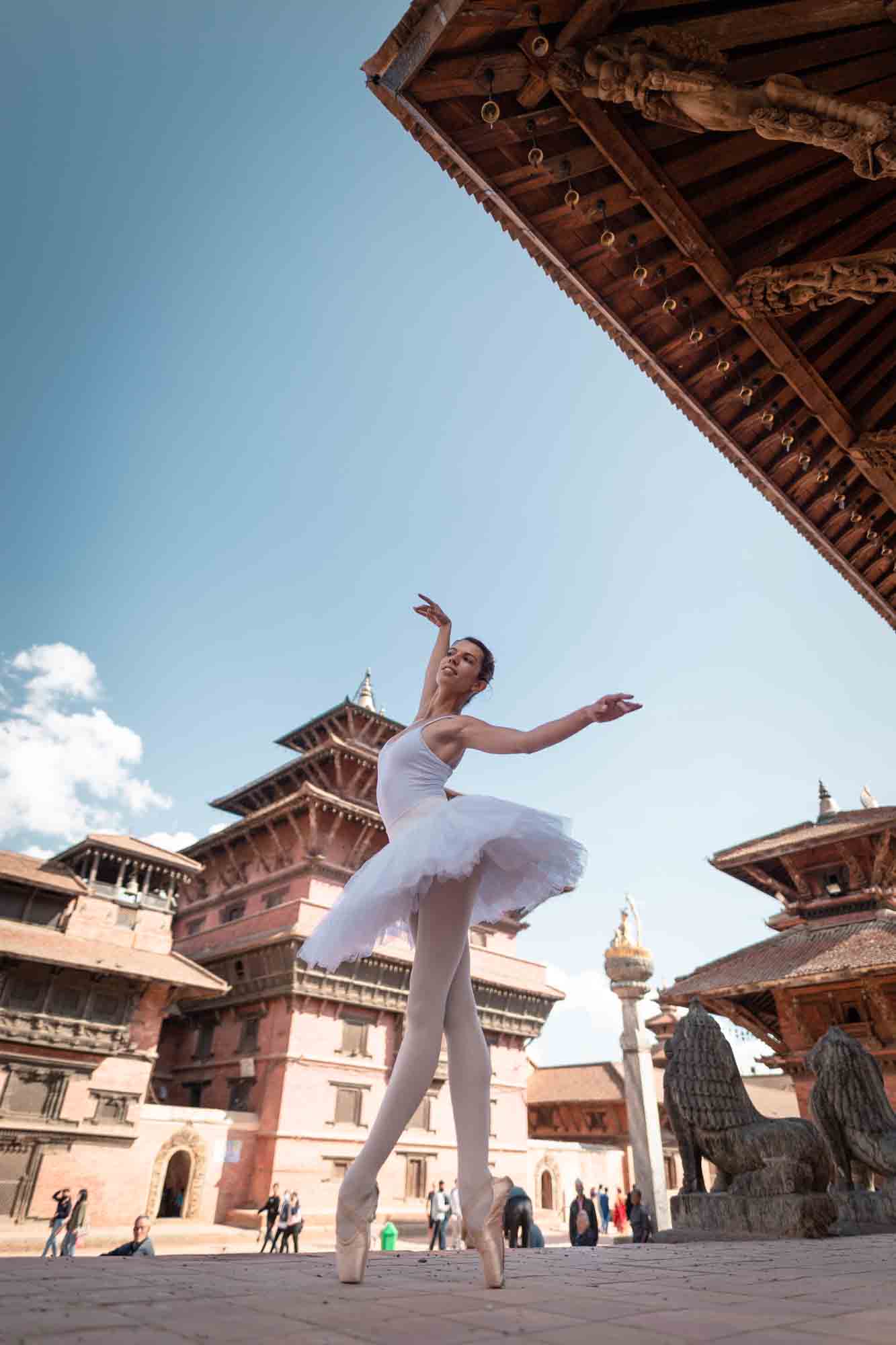Weekender
Of grace, poise and performance
As with any other classical dance forms, western or eastern, ballet demands time and patience from a dancer.
Prashanna Ghimire
Ballet requires emotional conditioning, physical prowess, and unwavering determination to be anywhere near perfect. As with any other classical dance forms, western or eastern, ballet demands time and patience from a dancer. And, who knows this better than Alize Bianne, a professional ballet dancer, who started ballet dancing at 10 years old.
Alize, a French citizen, she remembers being drawn to this classical form of dance early on in life. She’s travelled extensively and performed ballet and contemporary dance forms wherever she’s travelled to. “I’ve been to France, Spain, Germany, Australia, the US and the UK, primarily to learn and then perform,” she says.
“Different countries have different ways of doing ballet and I wanted to learn their postures, techniques, and grace. Ballet has different elements and I wanted to learn and explore how those elements are translated and presented in different cultures.”
Her love for travelling and learning led her to Nepal. But ballet is not a common dance form here. Alize has been in Nepal for the past six years and is working towards introducing the basics of ballet to eager learners. But it’s not an easy journey she’s embarked upon. “When I first came to Nepal, I felt that for ballet as a dance form to be understood here, it has to be woven into the local cultural practices. I couldn’t teach students ballet in its clean form. Also, since the ballet costume is rather revealing, I myself found it a bit uncomfortable to perform here,” she says, “but I started talking to a few people, saw the enthusiasm they had for the dance form and realised that my worries were unfounded.”
More than anything else, Elize wants people to understand ballet, relate to it and then learn the technicality of the dance form later. “I want to bring ballet to Nepal in a way that Nepalis can understand. For one to be able to learn something, one needs to be able to connect to it. A few months back, I performed at the Soaltee Hotel. My performance lasted for a minute and a half keeping in mind the formation, choreography and story-telling. Mine was a solo performance and it had a sequence to it,” she says. “But I didn’t do the sequence. After the performance, some members of the audience came up to me and said that they found the performance beautiful but that it was too short. That was when I realised that people are ready for a longer, more elaborate performance. However, if I had performed for 5-7 min and people had to watch one girl dancing in western classical music they would get bored.”

She believes that a performer understanding her audience is as important as the audience understanding the performance. “I think we both are ready for each other—my audience and I.”
Today Alize teaches a mixed bag of students in various studios in the city. Some of her students are young children while others are adults. “Ballet is something that should be learnt at an early age if you want to become a performer. So it’s easy to teach my young students. I enjoy teaching the older group too; they do it for fun,” she says. “The problem is when my students, especially the older ones, come to learn thinking it’s easy and that they would learn to ballet dance in a month or two. It’s not that simple. Most run out of patience and drop out.”
Finding the right balance of students was difficult for her but slowly it’s coming together, she says. “I have a group of young children and a few older women who are regulars. Hopefully, the numbers will increase. I’ve only just started.”
On that note, Alize takes me to join her class of four students at her studio. Her current studio does not have a ballet barre (handrail) so she’s using some chairs and tables as a substitute. “I’ve been renting out dance studios to give lessons but since there are no ballet studios in town, I have to improvise,” she says.
We start with a basic warm-up session—stretching for about 10-15 minutes focussing on every muscle and joint. Alize says, “Warm-up and stretching is important because in ballet we move about 40 muscles for a proper step, so we need to understand and engage with our muscles.”
We move to work on our core through basic planking and working our way from the abdomen to the legs, back, and bottom. We are now ready to move to the barre.
On the barre

Posture 1: Your heels should be touching the floor with your toes turned out. Hold your arm in front of your chest in an oval shape. Keep your back straight.
Posture 2: Move your feet and arms wide in equidistance but not towards the back. Form a circle in front of your chest.
Posture 3: Cross one foot in front of the other. Trick to make it perfect is by sliding the foot up to the knee and down
placing it exactly in proportion to your knee. Bring one arm curved towards you and the other wide to the side.
Posture 4: Place one hand on the barre for support and slide the front foot straight forward while raising the second foot in a tiptoe. The other hand should be curved towards the sky.
Posture 5: Put the lifted foot in front of the other just like posture 3.
Posture 6: Slide the front foot in front in a tiptoe and drag it backwards in the same position as posture 3 but instead of placing it in front, place it at the back. Bend your knee slightly, keeping little space between your legs. Raise one arm curved above your head and the other to the side.
Posture 7: Place one foot in front of the other, this time with both arms raised up in oval shape.
Twists and twirls

Step 1: Stand with one foot in front of the other aligned straight with the knees. Keep the arms at the side.
Step 2: Swing the hands slightly up and bring them down like flapping wings and bring them together in front in a closed
circle posture.
Step 3: Move hands upward in the same circle/oval position above the head and spread them wide towards the side and slightly flap the arms up and down. End with the hands in an oval position in front of the stomach.
Step 4: Bend the knee slightly and move the front foot
forward with one arm above the head and the other stretched to the side with hands in enclosed curve position with the last three fingers joining.
Step 5: Slide the back foot forward joining with the front one. Bring the arm above the head in front and move slightly in a down-up movement. Then do the same with the
second arm.
Step 6: Repeat step 3 and bring the arms in step 4 position. Stretch one foot in front, and bend the knee in position with the legs spread and feet facing opposite sides.
Step 7: Lift one foot in a tiptoe while raising the
corresponding arm. Spread the other arm sideways.
Step 8: Repeat steps 7 and 8 together with a one-two step leap in one direction.
Step five: Slide the back foot forward joining with the front one. Bring the arm above the head in front and move slightly in a down-up movement. Then do the same with the second arm.
Step six: Repeat step three
Step seven: Bring the arms in step four position while stretching the foot in front sideways and bending the knee in position with the legs spread and feet facing opposite sides.
Step eight: Lift one foot in a tiptoe while raising the same arm tiptoe above with the other arm spread sideways.
Step nine: Repeat steps seven and eight together with a one-two step leap in one direction.




 13.12°C Kathmandu
13.12°C Kathmandu










